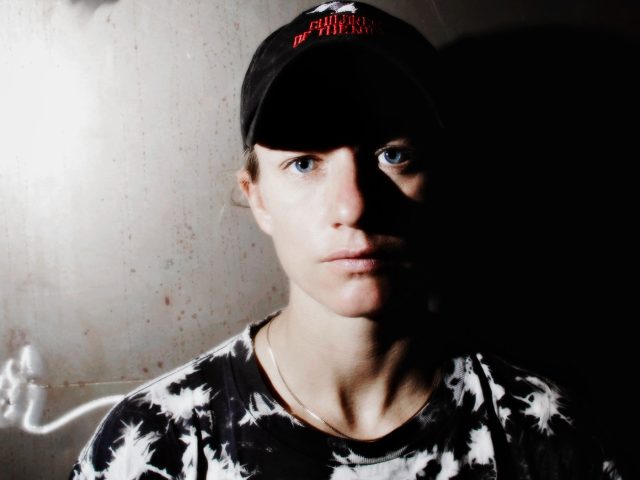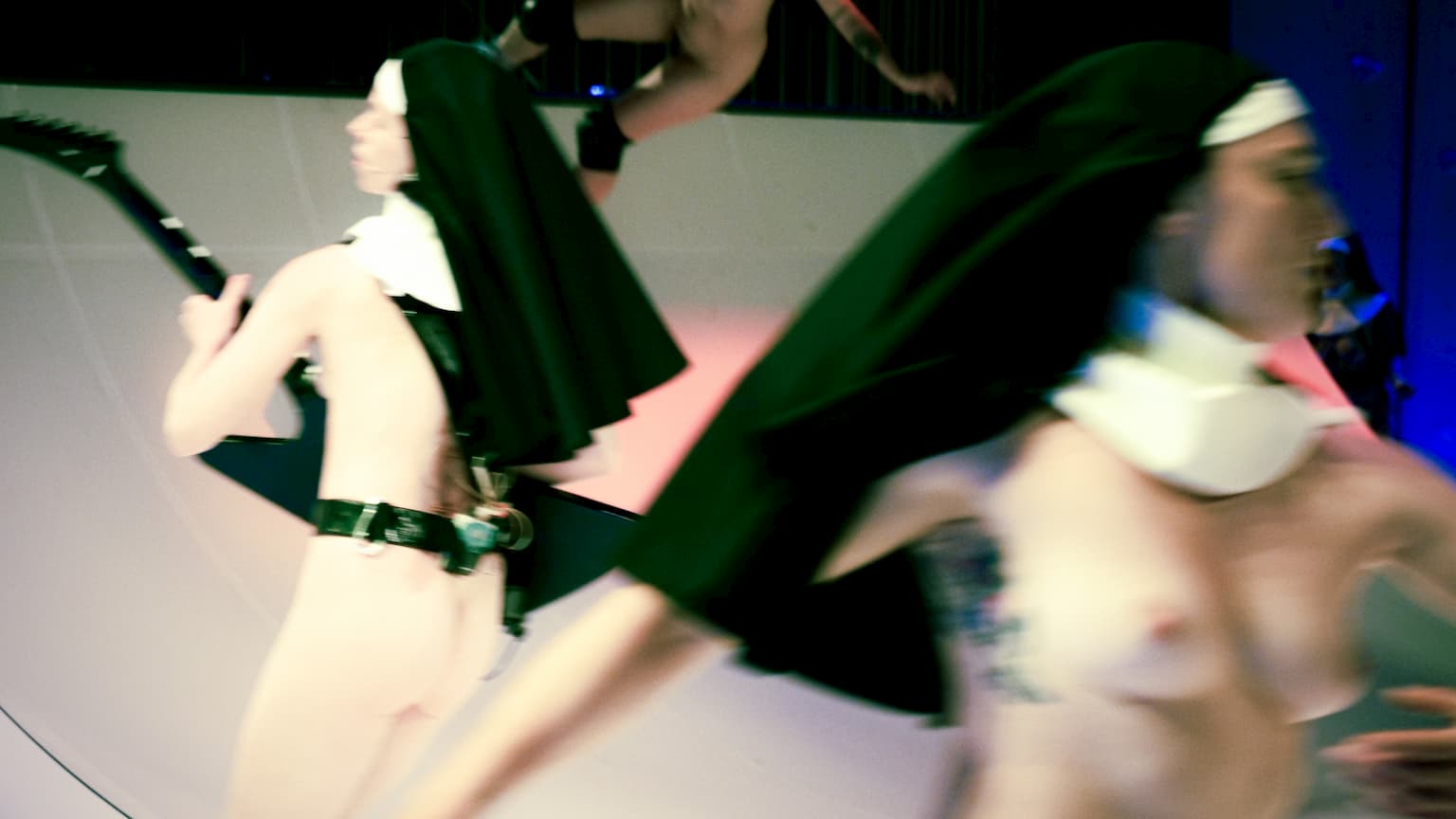- Interview
- Opera
- Season 25/26
‘Women's rights must continuously be fought for’
by Maarten Boussery / Portrait by Christoph Voy, Wed, May 7, 2025

‘In SANCTA, we rediscover and reclaim religious rituals and symbols. At the heart of the Christian faith lies love: love your neighbour as yourself,’ says Florentina Holzinger.
With SANCTA, you’re tackling opera for the first time. What fascinates you about this medium?
When I was asked a few years ago whether I was interested in opera, I didn’t hesitate for a second. Opera has always fascinated me: music, bodies, staged action, and theatrical imagery exist side by side as equals and merge into one. Working with this genre was a long-held dream. In my work, the combination of music and imagery has always played a key role, so opera felt like a natural progression from the performances my team and I had already created. Although I must admit, I knew very little about the operatic world back then. It took some time to get into it. I especially struggled with the fact that so much in opera is predetermined—both musically and textually. In our performances, we like to leave room to create our own narratives. Just like in traditional operas, our stories are often inspired by the past or canonical works, but I’ve never been interested in mere reproduction. That always requires translation and transformation.
I came across Hindemith’s one-act opera Sancta Susanna while preparing for another project. I was searching for works sung exclusively by female voices and ended up exploring operas set in convents. The world of nuns didn’t appeal to me at first, but the deeper I dug, the more I realised that “the nun” is a complex, charged archetype. It became an interesting starting point for examining religion as shared cultural heritage in relation to the Church. I discovered a lot about my own cultural background, especially as an Austrian. Everyone there is familiar with Catholic symbols, regardless of their (religious) beliefs—if they even have any. Moreover, the Catholic Church serves as a blueprint for the patriarchal system that still shapes our society today. I like to scrutinise that system in my performances.
What questions did the opera Sancta Susanna raise for you?
The opera centres on the libido of a nun, Susanna, in a convent. Her sexual awakening marks the story’s climax and becomes a turning point in the libretto, as she transforms—from the other nuns’ perspective—from Susanna into Satana. Hindemith’s opera is not only wonderfully camp, dramatic, and sensual; it also addresses the dark history of women’s bodies in the Church—a history that, unfortunately, still continues. The demonisation of female sexuality is a core theme. From a contemporary perspective, it’s interesting to approach the concept of the convent on multiple levels. Is it a place of sexual repression and asceticism—or could it be a space of emancipation, where women escape societal expectations?
You use rituals as a starting point in the production. What fascinates you about rituals—particularly those of the Catholic Church?
I don’t think I’m the only artist obsessed with Catholic symbols and rituals. Aside from shame and a number of misogynistic rules, the Church has gifted us an immense wealth of beautiful cultural artefacts. Its paintings, music, architecture, and rituals form a vital part of the Western world’s cultural heritage. Catholic symbolism often revolves around contrasts: darkness and light, pain and joy, ecstasy and suffering. These are all states that point to the tragedy of life and show us what it means to be human. In SANCTA, we rediscover those rituals and symbols and reclaim them. At the heart of the Christian faith lies love: love your neighbour as yourself. The Church has cast a long shadow over itself throughout history, but that core value remains. We want to draw attention to that, to the source of every belief system: love.
In what way is opera a ritual?
For me, every form of theatre—including opera—is a ritual space, governed by a strict set of rules, a dramaturgy to follow. And it holds the promise and power of transformation.
Like Wim Vandekeybus, you have a very physical movement language. You choose to show pain and suffering on stage.
Stage art has the potential to depict things that are difficult to express in other public spaces or media. The creation of illusion in theatre has always fascinated me. I love confronting people with it, confusing them about their own projections onto pain and pleasure. As a dancer, the idea of pain has always been relative to me. Some of my performers proudly call themselves “pain artists”—each for different reasons. A ballet dancer might never say that, but aren’t they also pain artists?
‘How do we relate to the reality of the dripping, leaking body? As long as the blood flows, I know I’m not dead.’
— Florentina Holzinger
Painful experiences are simply part of life, and it’s important to learn how to deal with them. Blood plays a crucial role in this—our bodies are full of it. Blood is something that’s supposed to stay inside the body. If it drips, that’s usually a bad sign. As you know, women are confronted with this monthly. How do we relate to the reality of the dripping, leaking body? For me, working with blood is a way to express vitality. As long as the blood flows, I know I’m not dead. Nearly all my performers bring their own fantasies and ideas about this into the creative process. Over the years, blood has become a central element in my productions.
What is it like to work in an institution with permanent musicians, dancers, and fixed structures?
The potential and power of opera are simply astounding. It’s a pleasure and a privilege to work with such a machine. Creating with a choir and orchestra is a huge enrichment for your artistic project. But I’d be lying if I said it’s always easy to work the way we like to. We come from the free, independent world of performance art. Artistic integrity and independence are paramount to us—only when those are safeguarded can a true creation happen. In that regard, you can face some resistance in the opera world. Opera institutions are traditionally built on strong hierarchical systems. Our productions challenge power structures and critique institutionalised forms of art-making. But within those systems and structures, we also find support. You can feel a real urgency within the opera world to drive change—to tell new stories, invite new creators, bring new audiences in. For me, the means and potential of the opera house are unparalleled in that mission.
Do you sometimes encounter resistance from the audiences of such institutions?
Generally speaking, opera audiences are very welcoming. I think, in a strange way, we fit well into the opera world. People who go to the opera are a special kind of audience: it’s no small feat to sit through several hours of Wagner, for example. Opera visitors are used to being challenged. Sometimes, our reputation precedes us, and people form opinions before seeing anything. But after the show, they’re often surprised by how beautiful they found it—despite everything they had read or heard beforehand. Wherever our productions are staged, there’s always a buzz surrounding our arrival. That creates a wonderful energy to bring a performance into.
What questions do you want to pose to the audience at Opera Ballet Vlaanderen?
Autonomy over the female body and reproductive issues are still highly contested topics. These rights must continuously be fought for and defended—now more than ever. In SANCTA, I want to challenge the audience to reflect on this, as well as on the patriarchal systems historically embedded in our society. I’m glad I get to do this through opera. Figuratively speaking, I’ve smelled blood in the opera world—and I can’t wait to return to it.
SANCTA © Mayra Wallraff
Antwerp
Sancta
Florentina Holzinger
